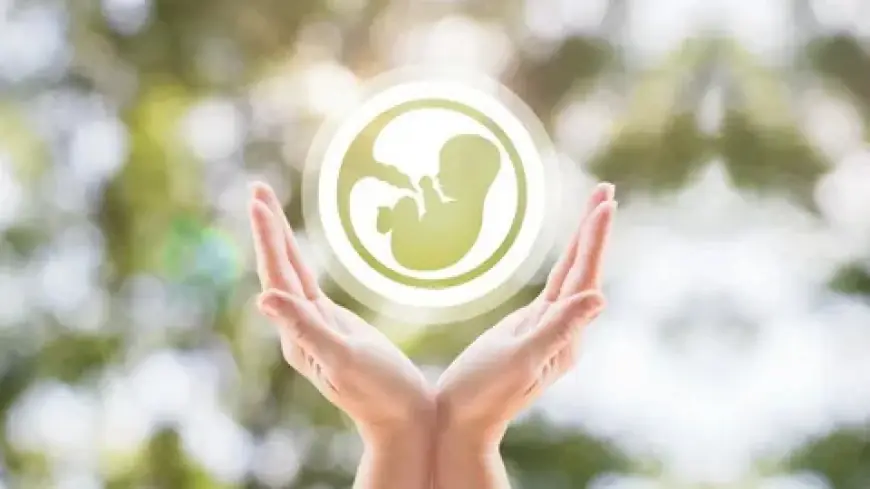Understanding Female Infertility: Causes, Treatments, and Solutions

Infertility is a growing concern among couples who are trying to conceive. For women, infertility can bring emotional distress and physical challenges, affecting not only their reproductive health but also their overall well-being. Fortunately, advancements in medicine have made it possible to diagnose and treat many causes of female infertility. If you’re seeking Female Infertility Treatment in Kenya, facilities like Fertility Point offer cutting-edge services to help women achieve their dream of becoming mothers. In this blog, we will explore the causes of female infertility, available treatments, and the solutions that can help women on their journey to parenthood.
What is Female Infertility?
Female infertility is a condition where a woman has difficulty getting pregnant or carrying a pregnancy to full term. It’s a complex issue that can involve a range of factors, from hormonal imbalances and ovulation issues to structural problems in the reproductive organs. Infertility is typically diagnosed when a woman has been unable to conceive after one year of regular, unprotected intercourse. However, for women over 35, infertility is diagnosed after six months of trying without success.
Common Causes of Female Infertility
There are various factors that contribute to female infertility. Understanding these causes is key to identifying appropriate treatments. Some of the most common causes of female infertility include:
1. Ovulation Disorders
Ovulation disorders are one of the most common causes of infertility. For a woman to become pregnant, she must ovulate, meaning that an egg must be released from the ovary and be available for fertilization. Disorders such as polycystic ovary syndrome (PCOS) or hypothalamic dysfunction can lead to irregular ovulation or the absence of ovulation altogether.
2. Blocked Fallopian Tubes
The fallopian tubes are essential for carrying the egg from the ovaries to the uterus. If these tubes are blocked or damaged, it can prevent the egg from reaching the uterus for implantation. Pelvic infections, endometriosis, or previous surgeries can result in blocked or damaged fallopian tubes.
3. Endometriosis
Endometriosis is a condition where tissue similar to the lining of the uterus grows outside the uterus. This can cause scarring, adhesions, and blockages in the fallopian tubes or ovaries. Endometriosis can lead to infertility, especially when it affects the ovaries, fallopian tubes, or the surrounding pelvic tissue.
4. Age-Related Factors
As a woman ages, the quality and quantity of her eggs decline. Women over the age of 35 may experience more difficulty conceiving due to these age-related factors. Egg quality diminishes with age, and women may also experience decreased fertility due to other health issues that arise later in life.
5. Uterine Problems
Issues such as fibroids, polyps, or abnormalities in the shape of the uterus can interfere with implantation and increase the risk of miscarriage. These conditions can prevent the fertilized egg from implanting properly in the uterine lining, making it difficult for pregnancy to occur.
6. Hormonal Imbalances
Hormonal imbalances are another common cause of infertility in women. Hormones such as estrogen, progesterone, and thyroid hormones play crucial roles in regulating the menstrual cycle and preparing the body for pregnancy. Imbalances in these hormones can disrupt ovulation, making it difficult for a woman to conceive.
7. Lifestyle Factors
Lifestyle factors such as excessive stress, poor diet, smoking, or excessive alcohol consumption can also negatively impact fertility. Maintaining a healthy weight, balanced diet, and avoiding harmful substances can improve a woman’s chances of conception.
How is Female Infertility Diagnosed?
Diagnosing female infertility typically involves a series of tests to assess ovulation, the health of the fallopian tubes, and the overall condition of the reproductive organs. Common diagnostic tests include:
-
Blood tests to check hormone levels, including thyroid, ovarian reserve, and progesterone levels.
-
Ultrasound imaging to assess the ovaries, uterus, and fallopian tubes.
-
Hysterosalpingography (HSG) to check the condition of the fallopian tubes and the uterus.
-
Laparoscopy to examine the pelvic organs for any abnormalities or endometriosis.
Treatment Options for Female Infertility
Once the underlying cause of infertility is determined, treatment options can be explored. The choice of treatment depends on the specific diagnosis and may range from medication to advanced assisted reproductive technologies (ART). Some of the most common treatments include:
1. Medication for Ovulation Disorders
If ovulation is irregular or absent, doctors may prescribe medications to stimulate ovulation. Medications like Clomid or Letrozole are commonly used to help regulate the menstrual cycle and induce ovulation. In some cases, injectable hormones like FSH (follicle-stimulating hormone) may be used to stimulate egg production.
2. Intrauterine Insemination (IUI)
IUI is a fertility treatment where sperm is placed directly into the uterus at the time of ovulation. This increases the chances of fertilization by bypassing some of the natural barriers to pregnancy, such as cervical mucus issues. IUI is often used in cases of mild male infertility or unexplained infertility.
3. In Vitro Fertilization (IVF)
IVF is one of the most advanced fertility treatments. It involves fertilizing an egg outside the body in a laboratory setting before implanting the embryo in the uterus. IVF is typically used for women with blocked fallopian tubes, severe endometriosis, or male infertility factors. IVF has a high success rate and is often recommended after other treatments have failed.
4. Surgery for Structural Issues
If there are physical blockages or abnormalities in the reproductive organs, surgery may be required. This may involve the removal of fibroids, cysts, or correcting structural abnormalities in the uterus or fallopian tubes. Laparoscopy is a minimally invasive surgical option commonly used to treat conditions such as endometriosis.
5. Egg or Embryo Donation
In cases where a woman has poor egg quality or cannot produce viable eggs, egg or embryo donation can be considered. Donor eggs are fertilized with the partner’s sperm or donor sperm and implanted into the uterus. This option can help women with low ovarian reserve or other reproductive issues.
Female Infertility Treatment in Kenya: Fertility Point
For women in Kenya facing infertility issues, Fertility Point is a leading clinic providing comprehensive Female Infertility Treatment in Kenya. The clinic offers state-of-the-art diagnostic services and personalized treatment options, including medication, IUI, IVF, and advanced fertility surgeries. With a team of experienced fertility specialists and a patient-centered approach, Fertility Point is dedicated to providing hope and support to women struggling with infertility.
The clinic’s approach to infertility treatment combines the latest medical advancements with compassionate care, ensuring that patients receive the best possible chance of conception. Whether you're just starting your fertility journey or have been struggling with infertility for some time, Fertility Point is committed to guiding you through the process with expertise and care.
Conclusion
Female infertility is a complex issue, but with the right diagnosis and treatment, many women can achieve their dream of becoming mothers. The causes of infertility vary, but modern medicine offers effective treatments tailored to individual needs. If you're seeking expert Female Infertility Treatment in Kenya, Fertility Point is a trusted facility that provides comprehensive care and advanced treatment options to help women overcome infertility challenges. By working with an experienced fertility specialist, you can take the necessary steps toward starting or expanding your family.
What's Your Reaction?
 Like
0
Like
0
 Dislike
0
Dislike
0
 Love
0
Love
0
 Funny
0
Funny
0
 Angry
0
Angry
0
 Sad
0
Sad
0
 Wow
0
Wow
0
















































